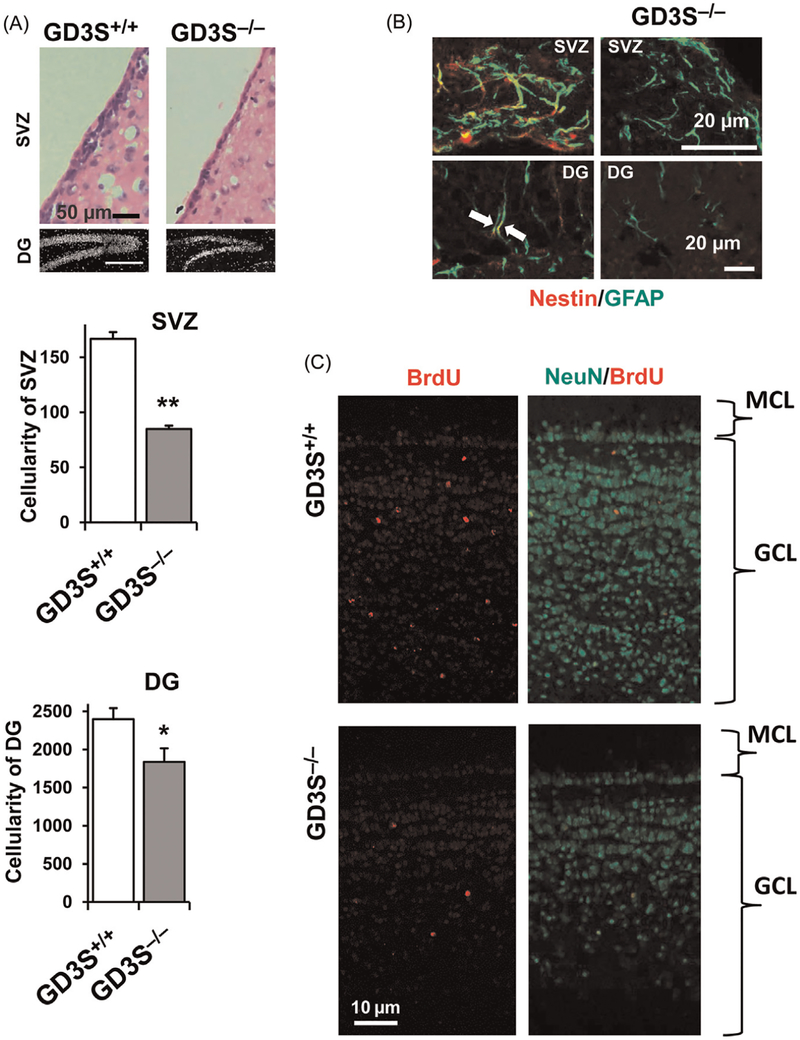Fig. 3.
NSC pools are reduced in GD3S-KO mouse brain in vivo. (A) Reduced cellularity in the SVZ and DG of adult GD3S-KO mouse brain (6-month-old mice). Hematoxylin and eosin staining was used to quantify the SVZ cellularity, and DAPI staining was used to trace the DG cellularity. Values are expressed as mean ± SEM; n = 4. *P < 0.05; **P < 0.01. (B) Nestin+/GFAP+ radial glia-like NSCs were reduced in the SVZ and DG of GD3S-KO mouse. In the 6-month-old SVZ, nestin+/GFAP+ cells were nearly absent from the GD3S-KO brains (B, right upper panel). Consistent with this observation, the number of nestin+/GFAP+ radial glia-like cells at DG of GD3S-KO mice was also significantly reduced (45.7 ± 13.6% at 1-month-old mice; 83.2 ± 15.2% reduced at 6-month-old mice) compared with their WT littermates. (C) Bromo-deoxy-uridine (BrdU) was administered to 4-month-old mice (i.p.) and imunohistochemical analyses were performed at 4 weeks after BrdU injection. Newly generated neurons (NeuN+/BrdU+) in the olfactory bulb (OB) were significantly decreased in GD3S-KO mice. The density of NeuN in the granular cell layers (GCL) was much lower in the GD3S-KO mice than in their WT littermates, which indicated a long-term insufficiency of the supply of new neurons to this region. MCL, Molecular cell layer.

